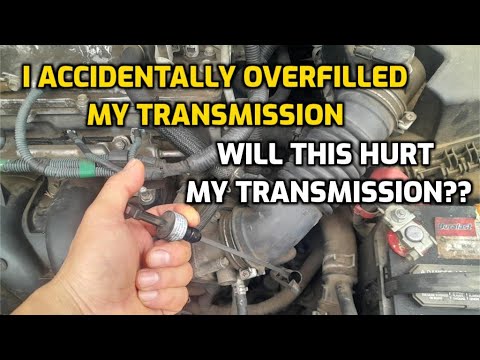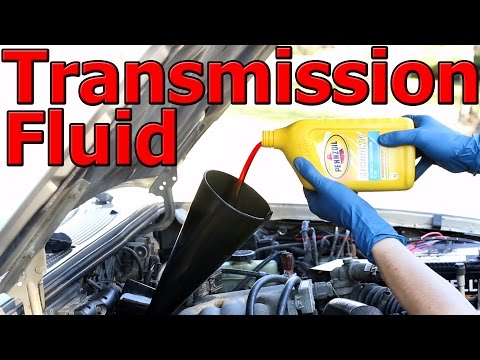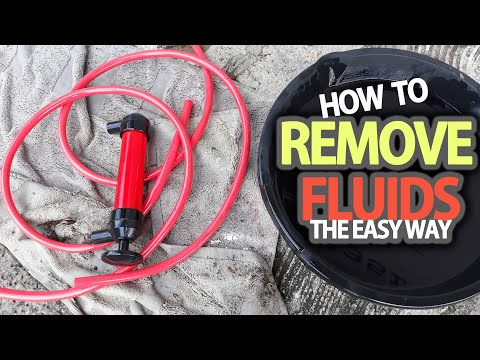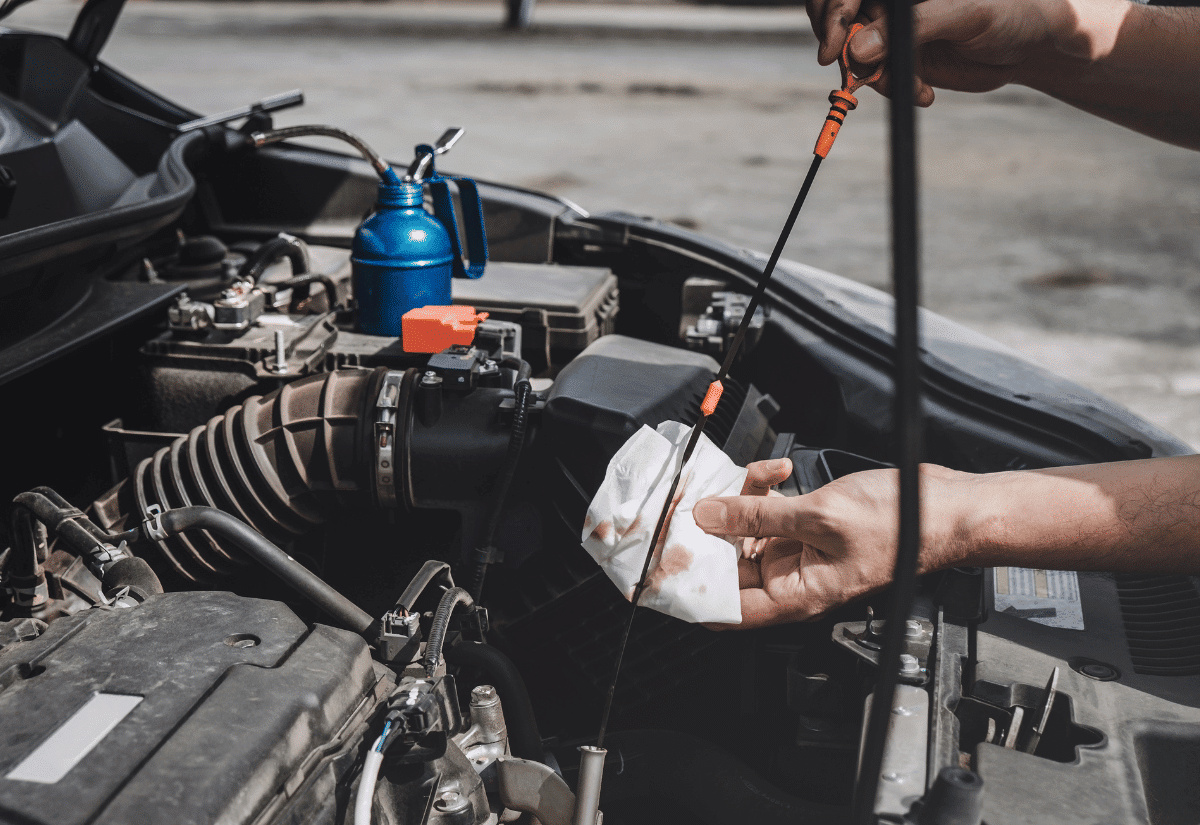
Transmission fluid plays a critical role in lubricating your transmission’s moving parts, shifting gears, and even dissipating excess heat. Though there can still be too much of a good thing. Especially if you’ve been adding transmission fluid to a sealed transmission without thoroughly checking the levels first.
Early signs that you’ve accidentally pour too much transmission fluid in your car often start out with trouble shifting gears, a strange humming noise when you accelerate, or the transmission running hot in stop-and-go traffic. If your transmission has a dipstick, you can quickly check to confirm that you do indeed have too much oil in the transmission.
Though a lot of modern-day automatic transmissions are sealed, with no dipstick, which makes it hard to really know if you accidentally overfilled it. In a time like this, you need to pay attention to what your car is trying to tell you to tell if it’s time to jack the car up and check the transmission fluid the hard way.
What Does Transmission Fluid Do?
Transmission fluid plays multiple roles in an automatic transmission. First and foremost it lubricates all the moving parts to prevent metal-on-metal contact from rapidly grinding away on the sophisticated gears inside the housing.
Transmission fluid also helps transfer pressure through the valve body, which acts as the brain of the transmission, helping to shift gears. It does this by activating and deactivating solenoids which divert pressure to activate the clutch packs and bands that engage and/or disengage gears.
Transmission fluid also plays a role in how the transmission cools itself. It moves through the pressurized system to fluid lines that carry it out to the lower portion of the radiator or a special transmission radiator. The fluid then releases some of its heat energy and returns back to the transmission to help keep it operating within a safe temperature range.
When the transmission fluid is too low, these systems are impeded. Gears can grind, the valve body doesn’t have sufficient pressure to change gears via the solenoid action, and heat energy doesn’t dissipate efficiently. Though too much transmission fluid can also mimic some of these same problems.
What Really Happens When You Overfill Your Transmission Fluid?
When you add too much fluid to your transmission it can affect the normal operating fluidic pressure inside the transmission housing as well as impede the transmission’s ability to cool itself properly. Left too long it can even cause transmission damage and potentially cause the transmission fluid’s lubricating properties to breakdown due to overheating.
Part pitting, which is a form of localized corrosion can also occur in an overfilled transmission. This is typically due to poor lubrication from the low or overfilled transmission fluid. It can be nearly impossible to inspect the internal components of your transmission to confirm it on your own.
Though overt signs of part pitting can include foamy transmission fluid, metallic flecks in the fluid, and transmission fluid that looks overly dark. Left long enough part pitting can also cause a whirring or grinding noise when you drive down the road.
How Much Is Too Much Transmission Fluid In My Car?
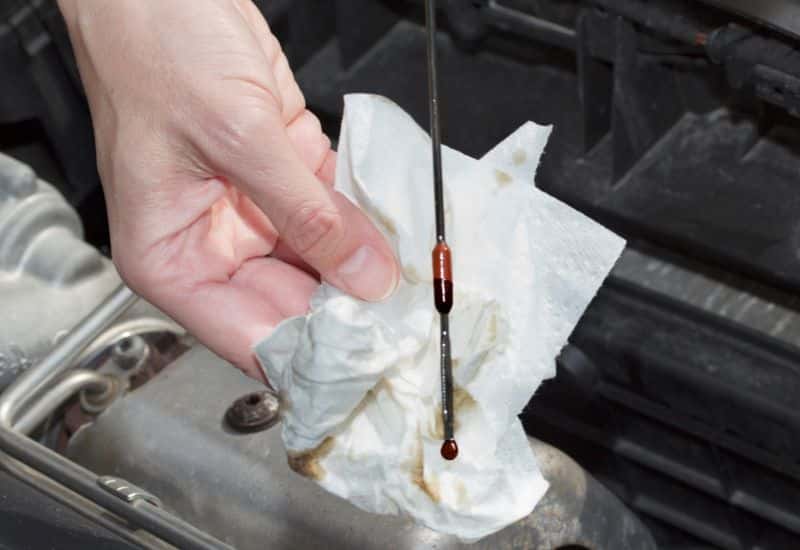
The average transmission holds between 9 to 13 quarts of fluid. Just how much fluid your car needs will vary depending on the make and model. Some vehicles hold less than this, and some larger vehicles, like full-size trucks, hold much more.
Automakers also build in a little bit of a buffer of up to a half quart that a car’s transmission can hold without trouble. Just in case of accidental overfilling. You can find out just how much transmission fluid your car can hold by checking the owner’s manual or the repair guide for your specific make and model.
Here are some average ranges for popular-size vehicles and how much transmission fluid they can hold.
How Does a Transmission End Up with Too Much Fluid?
The most common reason why transmission fluid ends up getting overfilled is due to an excess abundance of caution by the driver. They mistakenly think that they need to err on the side of caution by adding more transmission fluid.
1. Mistaking for Low Transmission Fluid
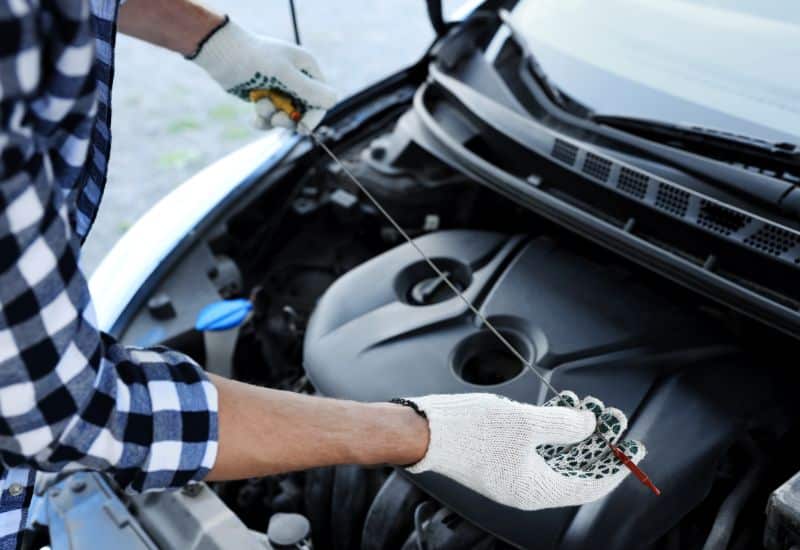
The car’s owner might hear a strange noise that they mistakenly think is a sign of low transmission fluid. Since a lot of modern cars have sealed transmissions without a dipstick, they err on the side of caution and pour some through the transmission fluid add port at the top of the engine.
They keep driving, and they hear strange whirring noises or notice that the gears aren’t shifting normally. Jumping to the conclusion that they still didn’t have enough, or that there might be some unseen leak, they pour a bunch more in. Yet still, the problems persist, and likely even get worse.
2. Error in a DIY Transmission Fluid Change
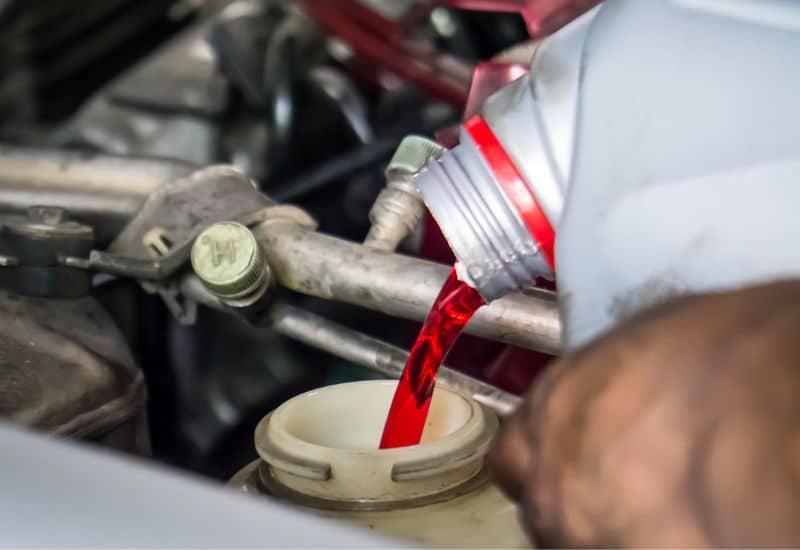
The next most likely reason why a transmission might be overfilled is an after-effect of a DIY transmission fluid change. When you drain a transmission to change the fluid, rather than performing a flush and fill, there’s naturally going to be some transmission fluid still left in the system. In some cases, 20 to 40% of the old transmission fluid remains.
If you pour in the full volume of fresh new fluid, the combined volume with the old fluid can cause it to be grossly overfilled. While this can sometimes happen at rapid-change auto shops, most of the time, it’s a home mechanic who overfills it on accident.
8 Telltale Symptoms You’ve Poured Too Much Transmission Fluid
The early signs of overfilled transmission fluid can start out subtle and might be mistaken for low transmission fluid. If you don’t check the dipstick or your car doesn’t have a transmission fluid dipstick, you might be tempted to add more, which will only make the problem that much worse. Overt signs of an overfilled transmission can manifest as the following.
1. Foamy Transmission Fluid on the Dipstick

If your car has a transmission fluid dipstick and you see little foamy globules when you check it, chances are good the transmission oil pan is overfilled beyond capacity. You might even notice transmission fluid leaking from the dipstick reservoir or the transmission fluid’s fill cap on the top of the engine.
This foaminess in the transmission fluid happens when it’s overfilled to the point that the transmission is grabbing air from the pan. It then mixes with the transmission fluid causing tiny bubbles that hamper the natural lubricating properties of the transmission oil.
2. Hard Shifting

Overfilled transmission fluid can affect the way the valve body shift solenoids inside a car’s automatic transmission operating leading to hesitating and heavy gear changes. This is due to the overly high fluidic pressure within the transmission housing and the valve body itself causing a delay in the shift solenoid engaging.
This hesitation allows the car’s engine to rev higher than normal. When it finally does catch the gear the torque load is extremely high and you’ll usually hear a “Clunk” noise with a momentary hard lurch as it changes up.
The same thing can also happen when the automatic transmission changes down. Though it’s less noticeable as the car’s RPMs are usually lower, so the “Clunk” is softer. Sometimes it might even feel like you tapped your foot on the brakes for a split second, even though your foot might not be anywhere near the brake pedal.
3. Transmission Fluid Leaking Out the Breather Vent
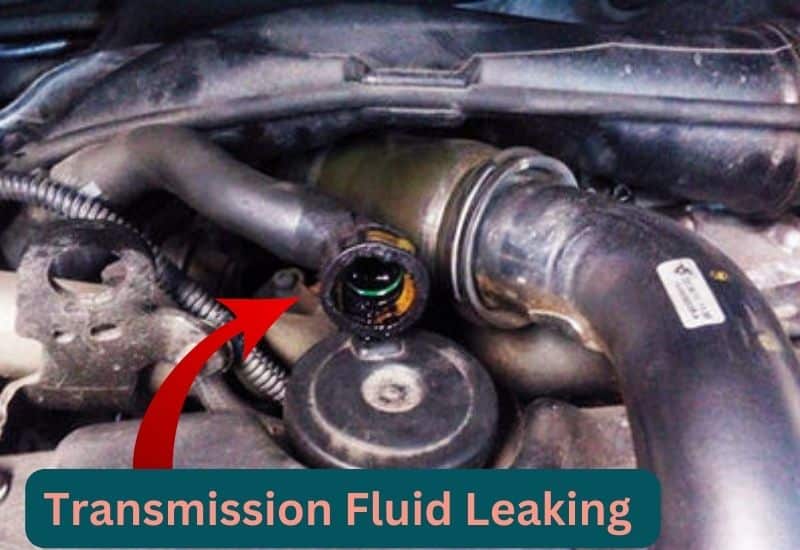
If you accidentally overfill your transmission fluid, the excess pressure and the natural expansion of the oil will inevitably start to seep out of the breather vent. This is more pronounced in manual transmissions as their way of maintaining equilibrium.
It’s usually located near the upper portion of the transmission housing, but the leak might dribble down the side of the case leaving little drips of transmission fluid or gear oil under the car.
The transmission breather is more likely to express oil when the fluid is hot, and the oil is expanded. When you stop and the transmission cools down the leak might vanish.
So, if you do suspect your transmission fluid is overfilled, make sure to check immediately after stopping the car!
4. Leaking Seals
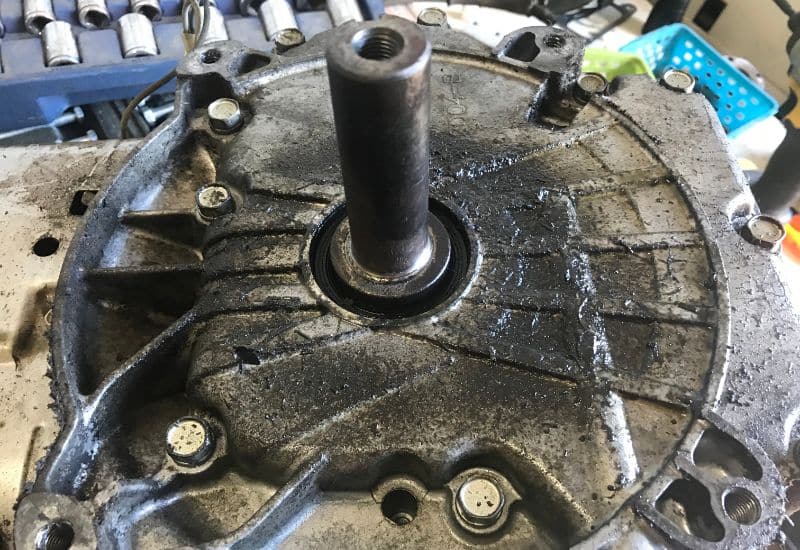
The excess pressure from overfilled transmission fluid can cause leaks in the static and dynamic seals on a transmission. Static seals like O-rings are more likely to fail and leak once the transmission has heated up and the oil inside starts to expand.
Whereas dynamic oil seals like the one on the output shaft at the back of the transmission might slowly seep excess transmission fluid for a few minutes after you stop. Then once you start driving again, the pressure starts to force more fluid out. This makes them harder to visually spot when you’re parked. You might have to crawl under the car to feel for wet spots where the output shaft exits the transmission to meet the drive shaft.
5. Car Goes Into Limp Home Mode
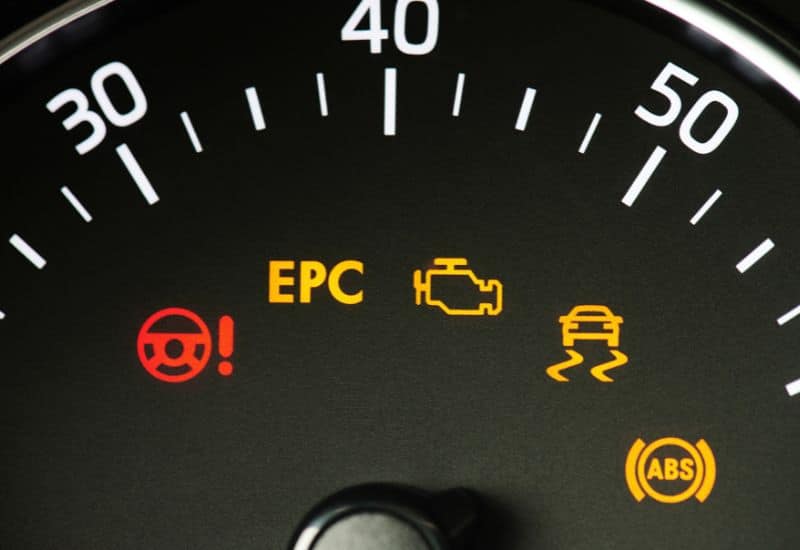
Limp home mode isn’t necessarily a direct sign of overfilled, transmission fluid, but is more likely to be an after-effect of how too much transmission fluid affects overall performance. A lot of modern cars have some form of “Limp Home Mode” which is governed by the ECU.
When it detects a problem in engine or transmission performance, such as overly hard shifting, or high revs without shifting or overheating, it activates limp home mode. This limits the engine speed and gear to prevent further damage.
6. Slipping Gears
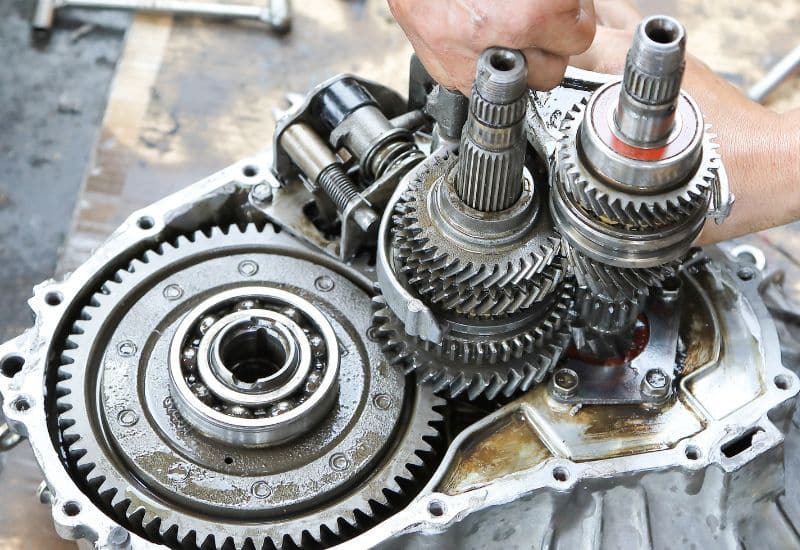
Gears can slip in an automatic transmission when excess fluid picks up air. This can also affect the normal flow of fluidic pressure through the valve body and other critical transmission components. The transmission starts slipping from one gear to the lower gear on the tree. It might even slip from first gear back into neutral.
This slipping gear effect can potentially confuse you into thinking that you have severely low transmission fluid. If you give into the temptation to add more without checking the transmission fluid levels, you could be making the problem worse.
7. Strange Grinding or Whirring Noises

Excess fluidic pressure and often the presence of air bubbles caused by overfilled transmission fluid can also cause strange grinding and whirring noises. There’s a little bit of irony here in that it often sounds like the gears and grinding, which in a way they are. As the air bubbles caused by too much transmission fluid are affecting the proper lubrication of the transmission’s moving parts.
Sometimes this can sound very much like the gears are grinding due to low transmission fluid. In a panic, you assume the worst and add a best-guess amount of transmission fluid to the filler port. Only to still have the grinding persist.
The transmission almost tricks you into thinking that the opposite is going on. If you don’t stop to check the fluid levels properly, the problem is going to keep getting worse until something in the transmission is pushed to catastrophic failure.
8. Overheating Transmission & Engine Running Hot

An overly full transmission can’t circulate fluid properly to and from the radiator causing it to gradually overheat. This can show up as a strange burning odor, hesitation in gear shifts, and excess grinding noises as you drive along. It’s possible for all this excess heat in the engine bay and surrounding the radiator to cause the engine to run hot. There’s even an increased risk of the engine overheating in stop-and-go traffic.
How to Check & Drain Transmission Fluid a Step-by-Step Guide
If your car has a dipstick for the transmission fluid then checking it is easy. Unfortunately, a lot of newer cars these days have “Sealed Transmission” without a dipstick. This makes them increasingly prone to accidentally overfilling the transmission fluid or the fluid is very low, as the driver feels like they have to guess.
Though there is a way to check the fluid levels in a sealed transmission. It just takes a little bit of extra time, effort, basic tools, and an oil drain pan.
How To Extract Transmission Fluid without Draining
It’s also possible to extract excess transmission fluid using a simple siphon tool. You’ll also need a small drain pan to hold the excess transmission fluid and a hearty handful of clean shop rags. With this process, you want the transmission fluid cool, so it doesn’t melt the siphon tube.
Once you have the car parked on a level spot with the parking brake on, you can start to siphon the overfilled transmission fluid using the following steps.
The end of the tube needs to be long enough to reach the bulk of the excess transmission fluid in the pan. Also, make sure that the tube is narrow enough to fit down the dipstick hole or the neck of the filler port.
If you have a transmission with a dipstick, make sure you are checking the level in comparison to the “COLD” line.
If the transmission fluid had bubbles in it, you’ll need to let it sit for a few hours before you check the fluid level again. If there are still bubbles, or the transmission fluid is dark in color, then you’ll probably need to have a transmission specialist do a complete flush and fill or you’ll need to change your transmission fluid completely.
If there are metallic flakes in the transmission fluid, they might need to do a transmission inspection and partial rebuild of the damaged gears.
Frequently Asked Questions
Can too much transmission fluid cause the transmission to slip?
Excess transmission fluid can cause gears to slip due to changes in lubrication caused by foamy air bubbles in the fluid. The imbalance in fluidic pressure can also affect how the valve body and shift solenoids perform, which could cause the transmission to hesitate in changing gears or cause it to slip out of gear.
Will an overfilled transmission leak?
An overfilled transmission that goes beyond what the breather port can handle can be prone to leaks at the O-rings, the oil pan gasket, and right where the output shaft meets the drive shaft. In the case of dynamic leaks such as at the output shaft, the leak is stronger when the transmission is warm and the car is moving. Then it quickly dissipates once you stop.
Why does my car jerk when shifting gears with automatic transmission?
Jerking due to an overfilled transmission is usually due to a hesitation in the valve body and the shift solenoids. The transmission doesn’t change up or down at the right RPM range. When it does catch the gear you get a hard clunk or a thump. It might also jerk as the clutch packs and bands struggle to make a smooth transition from one gear to the next.
Can too much transmission fluid cause limp mode?
Performance issues in the transmission can affect the engine and other systems like the traction control, causing the ECU to put the car into limp home mode. This is a protection feature on a lot of newer cars that limits the rev range of the engine and limits the transmission to one or perhaps two gears.
You might be able to bypass limp home mode by turning the car off or removing the positive battery terminal for a few minutes. Though chances are good that once you start the car again, another performance problem caused by excess transmission fluid will cause it to pop back into limp home mode once again.
Tackling Transmission Fluid Overfill
Signs of too much transmission fluid can often mimic the symptoms of low transmission fluid. This includes things like hesitation in shifting, slipping gears, grinding/whirring noises, and the transmission running hot. It might even cause leaks at some of the major seals or fluid to come out of the transmission’s breather port.
If you don’t have a transmission with a dipstick, you might simply give in to the temptation to add transmission fluid, thinking it’s low. This only compounds the problem affecting not only transmission performance, but also the engine. This can cause the ECU to put the car in limp-home mode to try to protect the transmission and engine from severe damage.
If you have a transmission with a dipstick, you should check the level. If it looks high and/or you notice bubbles in the fluid, then chances are good you have too much transmission fluid.
If you catch it early, you can simply drain some of the transmission fluid via the inspection port. If you have the right tools you could try to extract some transmission fluid. Though you’ll still need to eventually check the level to make sure it isn’t overfilled or too low.

Written By
Jason Farrell
Jason Farrell is a certified master technician, the editor of Mechanic’s Diary in Pittsburgh, Pennsylvania. He is ASE (Automotive Service Excellence) certified and earned a Bachelor’s Degree in Automotive Technology from Pittsburg State University. With nearly 18 prior years of experience in the automotive field, he has extensive knowledge about Domestic, European, and other foreign makes and models of cars and light trucks. Jason’s experience working as a technician and service manager at dealerships, gave him the experience and know-how of most aspects of inspection, diagnosis, and repair from engine and drivability to electrical, HVAC, brakes, steering and suspension and everything in between.

